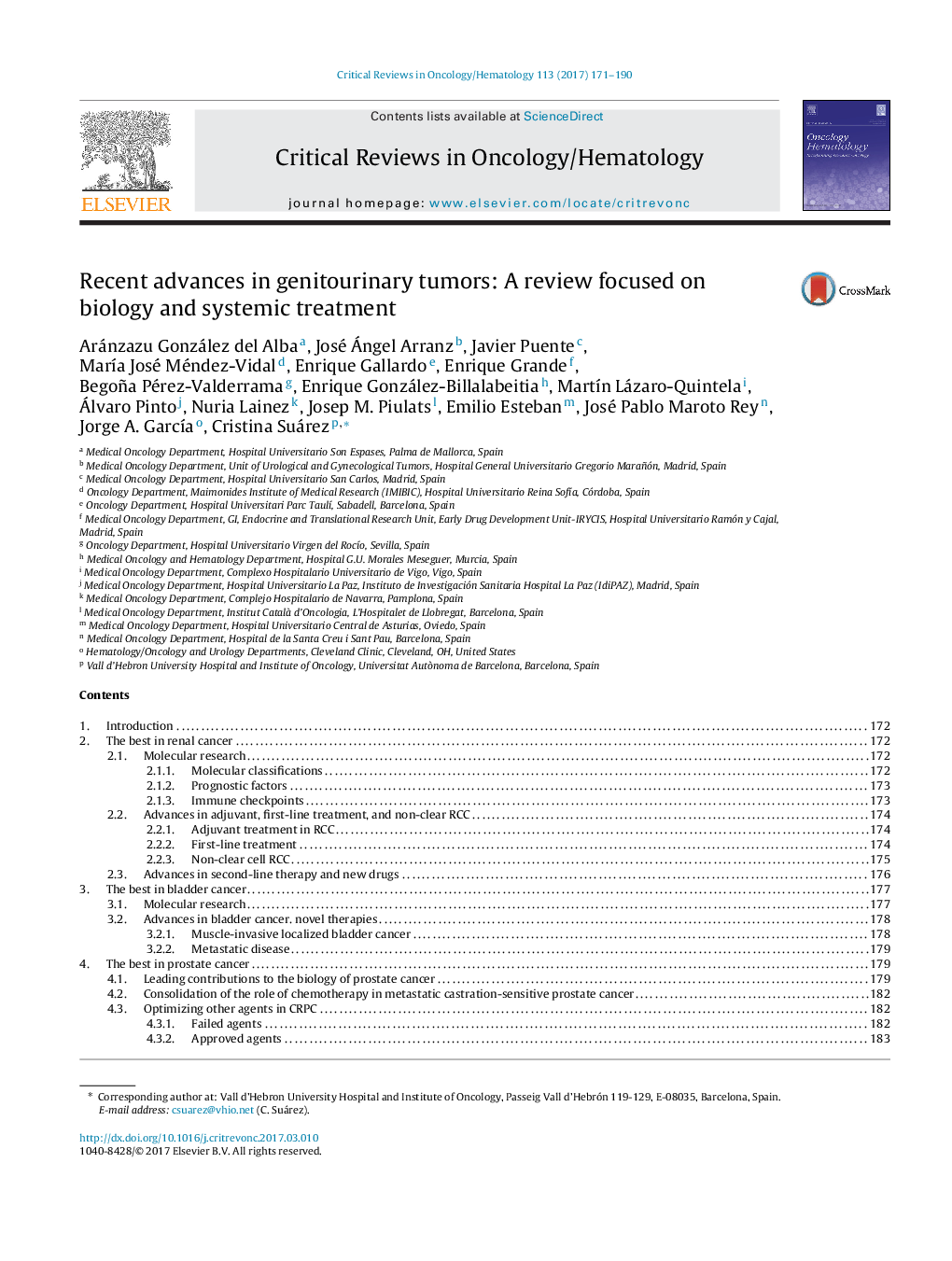| Article ID | Journal | Published Year | Pages | File Type |
|---|---|---|---|---|
| 5664086 | Critical Reviews in Oncology/Hematology | 2017 | 20 Pages |
Updated information published up to 2016 regarding major advances in renal cancer, bladder cancer, and prostate cancer is here presented. Based on an ever better understanding of the genetic and molecular alterations that govern the initial pathogenic mechanisms of tumor oncogenesis, an improvement in the characterization and treatment of urologic tumors has been achieved in the past year. According to the Cancer Genome Atlas (ATLAS) project, alterations in the MET pathway are characteristics of type 1 papillary renal cell carcinomas, and activation of NRF2-ARE pathway is associated with the biologically distinct type 2. While sunitinib and pazopanib continue to be the standard first-line treatment in metastatic renal cell carcinoma of clear cell histology, nivolumab and cabozantinib are now the agents of choice in the second-line setting. In relation to urothelial bladder carcinoma, new potential molecular targets such as FGFR3, PI3Â K/AKT, RTK/RAS, CDKN2A, ARIDIA, ERBB2 have been identified. Response to adjuvant cisplatin-based chemotherapy appears to be related to basal, luminal, and p53-like intrinsic subtypes. A phase II study with eribulin and a maintenance phase II trial with vinflunine have shown promising results. Similarly, the use of the check point inhibitors in advanced disease is likely to revolutionize the management of patients who have progressed after cisplatin-based chemotherapy. In prostate cancer, seven mutually exclusive molecular subtypes have been identified by the TCGA project. Chemotherapy has been consolidated as a key treatment for castration-sensitive metastatic prostate cancer, and abiraterone, enzalutamide, cabazitaxel, and radium-223 remain standard therapeutic options for men with metastatic castration-resistant prostate cancer. All this progress will undoubtedly contribute to the development of new treatments and therapeutic strategies that will improve the survival and quality of life of our patients.
